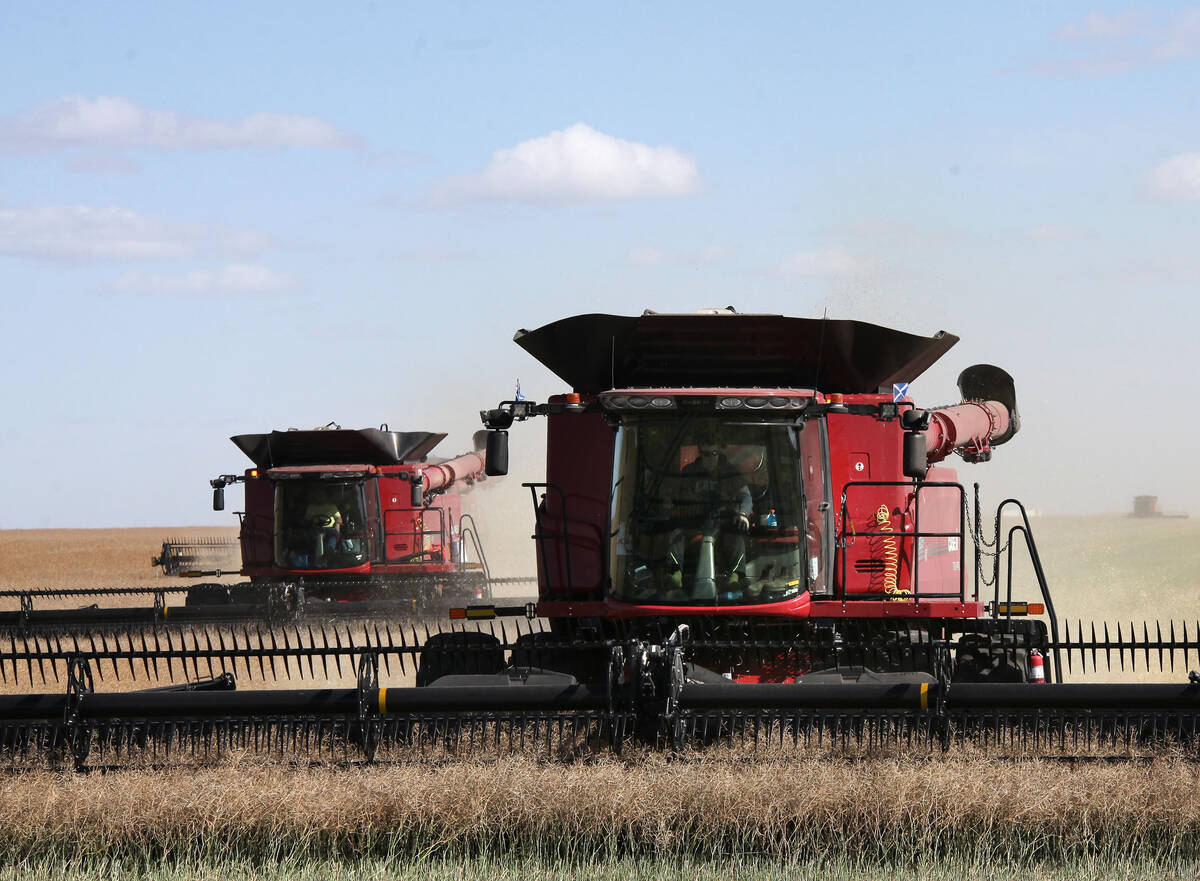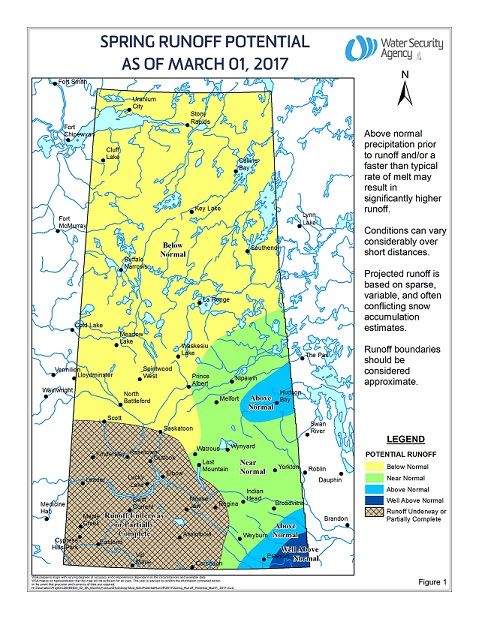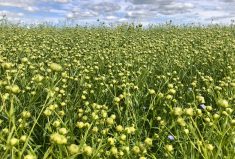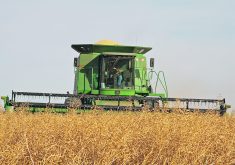Saskatchewan has raised its expectations for spring runoff across the board, now predicting “near normal” levels for much of the province and “above normal” to “well above normal” levels in its southeast.
The province’s Water Security Agency on Thursday released a March spring runoff forecast pointing to two “areas of concern” — the province’s far southeastern corner, and the Red Deer River basin in east-central Saskatchewan near Hudson Bay.
Saskatchewan’s heaviest snowpack is in the areas below the Rafferty and Alameda reservoirs in southeastern Saskatchewan and near the Manitoba border, the province said. Those areas, in the Souris River basin, were wetter than normal at freeze-up in 2016.
Read Also

Notable changes in exports to China, India
China and India figured prominently in the September export data issued by the Canadian Grain Commission on Nov. 7. For the most part, the CGC’s numbers highlighted issues with grain, oilseed and pulse exports from licensed facilities to those countries.
“Unless conditions are favourable leading up to and during the spring melt, well above normal flows are expected,” the province said.
Snowstorms seen earlier this week are expected to “add slightly” to snowpack in those areas “but not have a major impact.”
“Out-of-channel” flows are expected in those areas, the province added, but “significant” flood damages aren’t expected “unless conditions significantly change leading up to and/or during the spring melt.”
Manitoba, in late February, issued a spring flood outlook that pointed to “major risk” of overland flooding along the Souris and lower Assiniboine Rivers, among others.
Near Hudson Bay, Saskatchewan’s report said Thursday, the “well above normal” moisture conditions seen in the fall of 2016, combined with a near normal snowpack, are expected to result in above normal flows on the Red Deer River.
Manitoba in late February said the Red Deer River near Erwood, just east of Hudson Bay, was tracking “above normal streamflow conditions” and could have a “major risk” of flooding under unfavourable weather.
Much of Saskatchewan saw “well above seasonal temperature episodes” in January and February, leading to snowmelt and runoff in February, the province said, noting the area south of Biggar and west of Avonlea saw the “complete melt” of its snowpack in mid-February.
Given the current “near normal” mountain snowpack, runoff conditions are expected to be near normal throughout the Saskatchewan River system over the next six months, assuming normal conditions going forward, the province said.
Lake Diefenbaker, meanwhile, is now at an above-normal level for this time of year, but “will be returned to near normal levels prior to the end of May.”
Most water supply reservoirs were at or above normal levels in the fall of 2016, so surface water supplies across the province are expected to be “adequate” in 2017. Snowmelt runoff is also expected to replenish reservoirs that were below normal levels in 2016, such as Nickel Lake and Boundary Reservoir. — AGCanada.com Network















